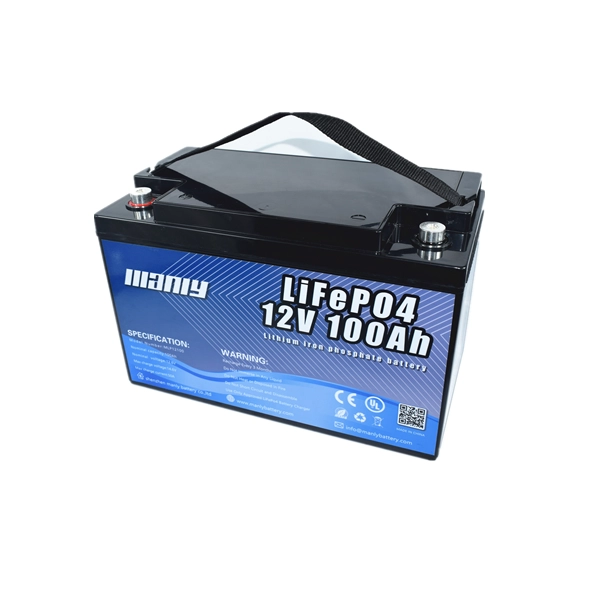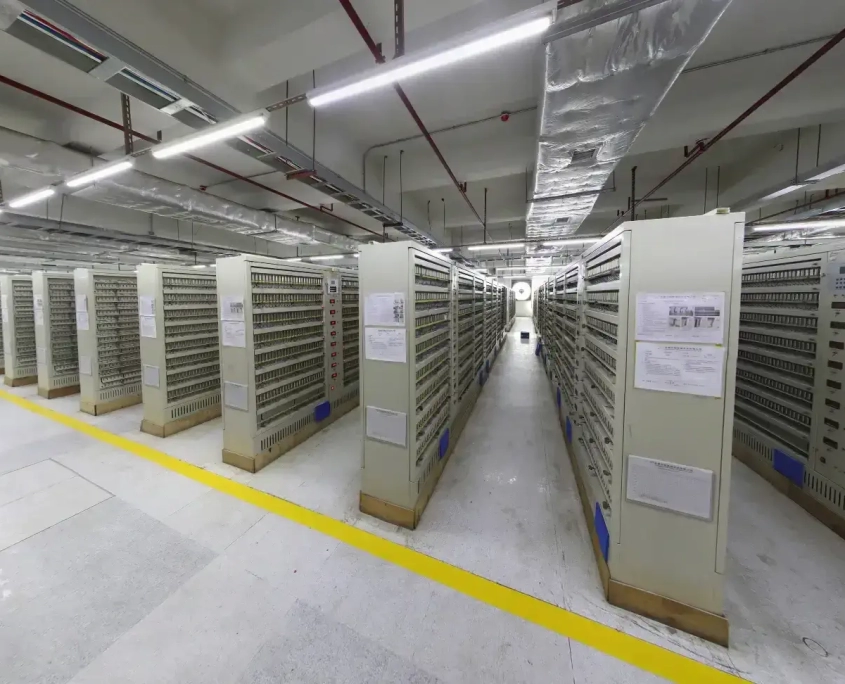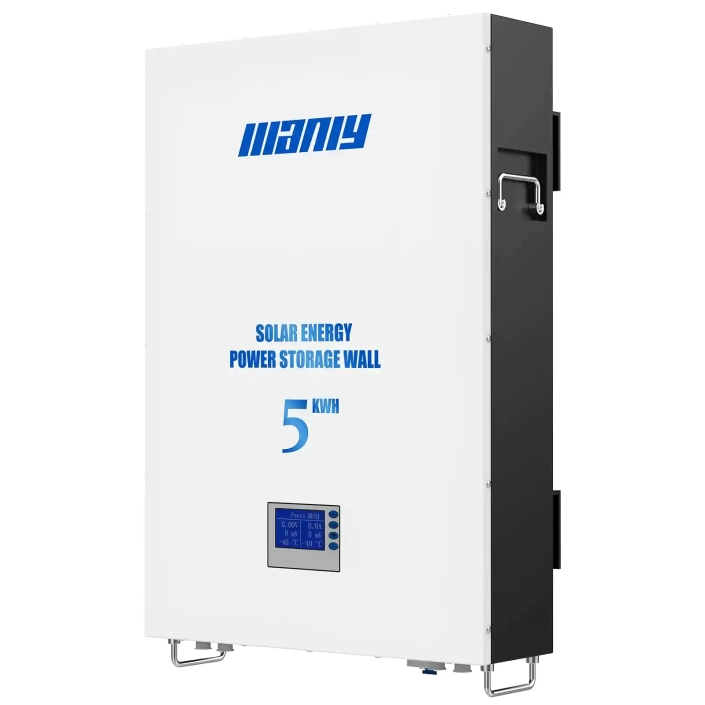Lithium Iron Phosphate Batteries’ Resurgence: A Phoenix-like Return
Lithium iron phosphate battery, refers to a lithium-ion battery that uses lithium iron phosphate (LiFePO4) as the cathode material.
It also has a longer name, called lithium iron phosphate lithium-ion battery, which comes from its charging and discharging process.
When the lithium iron phosphate battery is charged, lithium ions in the cathode migrate to the graphite anode through the polymer separator; during discharge, the lithium ions migrate from the anode through the separator back to the cathode.
Due to the performance of lithium iron phosphate batteries being particularly suitable for power applications and being internationally recognized as non-toxic and pollution-free green environmental batteries, they are widely favored and excel in the field of power lithium-ion batteries.
With the dual-carbon policy being elevated to a strategic level, lithium iron phosphate batteries have also witnessed high growth in the energy storage sector.
In 2021, the global shipment of energy storage lithium batteries was 70 GWh, an increase of 159%, with the lithium iron phosphate route accounting for over 50%. In 2021, the shipment of energy storage lithium batteries in China was 48 GWh, with the lithium iron phosphate route accounting for about 98.5%.
1. History Of Lithium Iron Phosphate Batteries
Performance, safety, and cost are the “impossible triangle” of the power battery industry. It is difficult to achieve superior battery performance, high safety, and low cost all at once.
This “triangular relationship” runs through the development of lithium batteries and also makes the path of lithium iron phosphate batteries somewhat bumpy.
Lithium batteries are mainly divided into lithium cobaltate (LCO), lithium manganate (LMO), lithium iron phosphate (LFP), ternary materials lithium nickel cobalt manganese oxide (NCM), and lithium nickel cobalt aluminate (NCA) based on the different cathode materials.
Among them, lithium cobaltate and lithium manganate batteries are respectively restricted by cost and performance, while ternary lithium nickel cobalt manganese batteries synergize lithium cobaltate, lithium nickelate, and lithium manganate materials, relying on higher energy density and longer cruising range to stand out and become the representative of the “performance faction”.
In contrast, lithium iron phosphate batteries have relatively lower energy density and poorer low-temperature endurance, but have the advantages of low cost, high safety, and longer cycle life, becoming the representative of the “cost-performance faction”.
1.1 China’s 10-Year Lithium Iron Phosphate Batteries Progress
Since 2009, the country has adopted subsidy policies to promote the development of the entire industry, and the shipment of lithium iron phosphate batteries and ternary batteries has increased significantly.
Starting in 2016, as China’s new energy vehicle development entered a strategic stage, the requirement for battery system energy density in the subsidy assessment standards for new energy vehicles continued to increase, with high energy density and long-range being the focus of subsidies. This led the market towards ternary batteries with inherently better performance.
By June 2019, the proportion of ternary battery installations in China had reached over 70% of the total installations, occupying an absolute advantage, while lithium iron phosphate batteries only had a 27% share.
However, the good times for ternary batteries did not last long. By August 2022, the proportion of lithium iron phosphate battery installations in China had reached 62% of the total installations, while the share of ternary batteries had dropped to 38%.
1.2 Lithium Iron Phosphate Batteries Market Analysis
- Policy subsidy decline: After 2019, local subsidies were canceled in the passenger car sector, with an overall decline of about 60%-67%, and a plan to completely exit by the end of 2022.
- Supply-side performance optimization: The optimization of large battery cell design schemes and system structures effectively increased the energy density of lithium iron phosphate batteries. New energy vehicles equipped with lithium iron phosphate batteries can achieve a range of over 500km, which can basically meet the needs of urban commuting and short-distance travel.
- Demand-side focus on safety: When the range is guaranteed, the focus of customers gradually shifts from extreme performance improvement to higher safety, and the marginal advantage of ternary batteries compared to lithium iron phosphate batteries is greatly weakened.
At present, in the field of power, the competition between ternary batteries and lithium iron phosphate batteries is clear: ternary batteries have a say in the high-performance, long-range high-end car market, while lithium iron phosphate batteries have gained a foothold in the mid-to-low-end car market and continue to penetrate upwards with system structure optimization.
2. Commercial Of Lithium Iron Phosphate Batteries
The chessboard of lithium iron phosphate batteries extends from mineral resources to separators and electrolytes, and then to battery manufacturing, all connected together.
In terms of production costs, the largest proportion of raw materials in lithium iron phosphate batteries is cathode materials (26%), followed by anode materials (14%), separators (11%), electrolytes (10%), and finally copper foil (6%).
However, when looking at the investment intensity per GW, the investment intensity of cathode materials and copper foil is the largest, at 90 million and 55 million respectively, indicating that these two links are asset-heavy operations, and capacity expansion requires significant capital investment.
Lithium iron phosphate cathode material players are mostly large-scale chemical companies with reserves of lithium mines, phosphate mines, etc. The industry concentration is high but has shown a downward trend in recent years; the barriers in the copper foil industry mainly lie in the formulation of additive foils and equipment debugging, and the current industry structure is relatively scattered.
In comparison, separators, electrolytes, and anode materials are better links, with lower investment intensity, better industry concentration, and stronger pricing power.
Cathode materials are the decisive factors for the chemical performance of lithium batteries, such as energy density and safety.
In the preparation cost of lithium iron phosphate cathode materials, the proportion of lithium sources is 59.4%, and the combined iron sources and phosphorus sources account for nearly 70% of the raw material costs. The future direction of cost reduction focuses on reducing raw material loss and seeking low-cost alternative mineral sources.
The preparation process of lithium iron phosphate mainly includes solid-phase and liquid-phase methods. The solid-phase method is simple and suitable for large-scale production, while the liquid-phase method produces lithium iron phosphate products with better consistency and cycling performance, represented by DFNano.
The market structure of lithium iron phosphate cathode materials is stable, presenting a two-strong competition situation. The two giants, Hunan Yueneng and DFNano, account for nearly half of the market share, with a CR2 of 45.21% in 2021.
Looking at the entire cathode material industry, the rapid growth in demand for lithium iron phosphate batteries has also driven lithium iron phosphate cathode materials to become the mainstream of the market.
According to data, the total production of domestic cathode materials reached 720,200 tons in the first half of 2022, a year-on-year increase of 54.6%. Among them, the cumulative production of lithium iron phosphate materials was 384,700 tons, a year-on-year increase of 119.1%, accounting for 53%; the cumulative production of ternary cathode materials was 263,800 tons, a year-on-year increase of 45.9%, accounting for 37%.
At the same time, the shipment volumes of lithium iron phosphate and ternary cathode materials in China reached 411,000 tons and 280,000 tons in the first half of 2022, with year-on-year increases of 136% and 48%, respectively. The super-doubling of shipment volumes has also made Hunan Yueneng and DFNano the first and second places in the entire cathode material industry in 2021.
As the saying goes, “A rising tide lifts all boats.” The close relationship between the rising prices and volumes of upstream raw materials and midstream battery manufacturing, and the development of downstream end-use applications is evident. After turning the tables in the power battery field, lithium iron phosphate batteries have found a new world.
3. Opening a New World Of Lithium Iron Phosphate Batteries
Under the backdrop of carbon neutrality and 5G construction, the demand gap in the energy storage field is expanding. Lithium energy storage is currently the fastest-growing technology in China’s new energy storage field.
Economic and safety features are important factors for energy storage batteries.
Wind and solar power systems have high costs and environmental variability, requiring energy storage batteries with long-lasting use, stable performance, strong environmental adaptability, and low cost.
3.1 Features Of Lithium Iron Phosphate Batteries
Lithium iron phosphate batteries have longer cycle life than lead-acid and ternary batteries, with over 2000 cycles and 3-4 times the capacity of lead-acid batteries.
Also, lithium iron phosphate batteries maintain stable structures at high temperatures due to their olivine structure, offering superior safety and stability. They have a wide working temperature range.
Additionally, lithium iron phosphate batteries have no memory effect, can be charged as needed, and do not require complete discharge before charging. They are free of toxic heavy metals, environmentally friendly, and have lower raw material and maintenance costs.
In construction, lithium energy storage has flexible capacity configuration, fewer site constraints, and shorter construction periods, providing quick regulation services for power systems.
Statistics show that in the first three quarters of 2022, China’s newly installed capacity of energy storage projects reached 963.7 GW, a year-on-year increase of 120%, with lithium iron phosphate storage accounting for the majority.
Insiders stated that currently, the upstream materials of lithium iron phosphate battery cells are in tight supply balance. The daily production line shipment volume of energy storage systems exceeds 10 GWh, with a daily demand for more than 13,000 battery cells.
After assembly and testing, most new lithium iron phosphate energy storage devices will be shipped to wind and solar power bases as supporting storage facilities, improving the efficiency and stability of power plants.
In communications, the Ministry of Industry and Information Technology confirmed the leading role of lithium iron phosphate batteries in 5G base station energy storage applications in August 2020. Many domestic power-side energy storage projects also use lithium iron phosphate batteries.
In 2021, 650,000 new 5G base stations were built in China. With a power consumption of 3,500 W per base station and a required emergency duration of 4 hours, each station needs 14 kWh of backup power. The 2021 5G base station energy storage market could provide a 9.1 GWh demand space for lithium iron phosphate batteries.
3.2 China Needs Of Energy Storage
Domestic energy storage demand mainly focuses on power storage and communication storage, while overseas demand comes from household storage. Reasons include:
- High energy prices: European countries have seen rising energy prices, and high retail electricity prices with policy subsidies are stimulating local household storage market development.
- High outdoor activity participation: The US has the largest outdoor activity demand market, with camping, caravans, computers, lighting, and photography increasing the need for portable household energy storage devices.
- Emergency and disaster preparedness: Portable energy storage products are popular in Japan and have been certified as disaster prevention safety supplies by the Japan Disaster Prevention Association in 2020, gradually replacing traditional fuel engines.
3.2 Overseas Needs Of Energy Storage
The overseas energy storage market boom provides opportunities for domestic lithium battery companies.
Customs data show that in the first nine months of the year, China’s cumulative lithium-ion battery exports reached $34.911 billion, a year-on-year increase of 83.3%, surpassing the total lithium battery export value for 2021.
The overseas energy storage market has become the largest revenue contributor for domestic power storage battery companies. First-tier domestic energy storage battery companies, represented by CATL and BYD, have made a name for themselves among overseas system integrators and owners.
Energy storage as an independent game is getting bigger, and
lithium iron phosphate batteries may be the key to tipping the scales.
4. Conclusion
Internal forces, external policies, and macro goals all determine whether a material or technology can move from the lab to the market and ultimately succeed.
From power batteries to energy storage, lithium iron phosphate batteries have successfully navigated commercialization hurdles with their excellent properties, mature industry chains, and vast market potential, becoming the main force in the lithium battery industry.
However, lithium iron phosphate batteries are not perfect, and their performance limitations lead the market to continuously seek and research new upgraded materials, such as lithium manganese iron phosphate.
Technology is still progressing, and the market is ever-changing. The strong development momentum in the power and energy storage fields will propel lithium iron phosphate batteries onto a broader stage.






